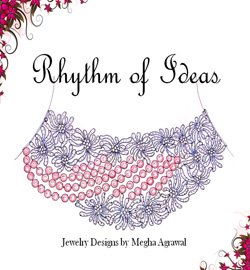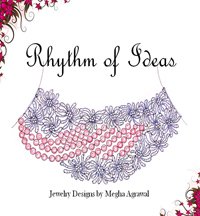Types of Round Brilliant Cut
You might not be aware that a well cut diamond reflects more light and looks more beautiful than a diamond with comparatively higher clarity and better color shade.
There are various forms of diamond cuts, but the modern Round Brilliant cut is the most popular among diamond cuts. Over the period of time, facets arrangements and cut proportions have evolved and famous cutters have given cutting variations in modern round brilliant cut. These cuts are:
- Tolkowsky Brilliant Cut
- Ideal Brilliant Cut
- Practical Fine Cut
- Parker Brilliant Cut
- Scan D.N. Standard Brilliant Cut
- Eulitz Brilliant Cut
So, let’s talk about these in more detail.
Tolkowsky Brilliant Cut
This cut was developed by Belgian diamond cutter Marcel Tolkowsky in 1919. It is also known as American Ideal or Tolkowsky Brilliant. In America, this cut is considered as benchmark and basis of cut grading.
In this cut, both the brilliance and fire of diamond is considered which is derived on the basis of mathematical calculations.
The measurements of this cut are:
| Proportion of Crown Height to Girdle Diameter | 16.2% |
| Proportion of Pavilion Depth to Girdle Diameter | 43.1% |
| Proportion of Table Diameter to Girdle Diameter | 53% |
| Crown Angle | 34.5o |
| Pavilion Angle | 40.75o |
Ideal Brilliant Cut
It was developed by Johnson and Roesch in 1929. This cut takes into consideration only the light falling perpendicularly on the diamond. Light entering slant wise is not taken into consideration. Thus, the brilliance of this cut is limited.
The measurements of this cut are:
| Proportion of Crown Height to Girdle Diameter | 19.2% |
| Proportion of Pavilion Depth to Girdle Diameter | 40% |
| Proportion of Table Diameter to Girdle Diameter | 56.1% |
| Crown Angle | 41.1o |
| Pavilion Angle | 38.7o |
Practical Fine Cut
This cut was developed in Germany by Eppler in 1939. It’s also called Feinschliff der Praxis and Eppler cut. This cut was developed as a result of practical experience and practical observation thus named Practical Fine Cut.
Practical Fine cut is set as benchmark in Germany and other European countries and used as standard cut for judging cut proportions. This cut takes into consideration both perpendicularly and slant-wise entering light. It differs from Ideal Brilliant cut to great extent but it has improvised on Tolkowsky cut.
The measurements of this cut are:
| Proportion of Crown Height to Girdle Diameter | 14.4% |
| Proportion of Pavilion Depth to Girdle Diameter | 43.2% |
| Proportion of Table Diameter to Girdle Diameter | 56% |
| Crown Angle | 32.2o |
| Pavilion Angle | 40.8o |
Parker Brilliant Cut
This cut was developed in 1951 by Mr. Parker. Its cut proportions results in very low brilliance as the crown is too shallow. Therefore, this cut hasn’t gained much popularity. The measurements of this cut are:
| Proportion of Crown Height to Girdle Diameter | 10.5% |
| Proportion of Pavilion Depth to Girdle Diameter | 43.4% |
| Proportion of Table Diameter to Girdle Diameter | 55.9% |
| Crown Angle | 25.5o |
| Pavilion Angle | 40.9o |
Scan D.N. Standard Brilliant Cut
The Scan D.N or Scandinavian Diamond Nomenclature was developed in 1969. The proportions of this cut were developed on the basis of observation and practice.
The measurements of this cut are:
| Proportion of Crown Height to Girdle Diameter | 14.6% |
| Proportion of Pavilion Depth to Girdle Diameter | 43.1% |
| Proportion of Table Diameter to Girdle Diameter | 57.5% |
| Crown Angle | 34.5o |
| Pavilion Angle | 40.75o |
Eulitz Brilliant
This cut was developed by Mr. W.R Eulitz in the year 1972. This is the only cut that gives emphasis to the girdle thickness.
Mr. Eulitz in his work “Determining mathematically the optimum brilliance of brilliants”, showed mathematically that maximum of light yield resulting from internal total reflection and an optical color scattering from dispersion can be obtained by using the proportions given by him. These proportions are very close to that given in Eppler or Practical Fine Cut.
The measurements of this cut are:
| Proportion of Crown Height to Girdle Diameter | 14.45% |
| Proportion of Pavilion Depth to Girdle Diameter | 43.15% |
| Proportion of Table Diameter to Girdle Diameter | 56.5% |
| Crown Angle | 33.36o |
| Pavilion Angle | 40.48o |
Return from Types of Round Brilliant Cut to Cuts of Diamond page
Return from Types of Round Brilliant Cut to Diamond Jewelry Homepage
I hope you'll not mind sharing this on Twitter, Facebook and with everyone else :)
Feel free to share if something is in your mind and want it to be covered on this site.
My Newsletter
Did you liked this article? Sign-up my FREE weekly newsletter and I'll send you more awesome new additions on this website along with latest jewelry happenings around the world, and download my Jewelry Design Album for FREE!
 |
|


